Related Research Articles
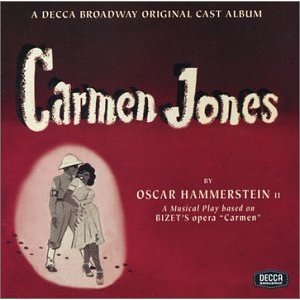
Carmen Jones is a 1943 Broadway musical with music by Georges Bizet and lyrics and book by Oscar Hammerstein II which was performed at The Broadway Theatre. Conceptually, it is Bizet's opera Carmen updated to a World War II-era, African-American setting. Bizet's opera was, in turn, based on the 1846 novella by Prosper Mérimée. The Broadway musical was produced by Billy Rose, using an all-black cast, and directed by Hassard Short. Robert Shaw prepared the choral portions of the show.

Truman Garcia Capote was an American novelist, screenwriter, playwright, and actor. Several of his short stories, novels, and plays have been praised as literary classics, including the novella Breakfast at Tiffany's (1958) and the true crime novel In Cold Blood (1966). His works have been adapted into more than 20 films and television productions.

Diahann Carroll was an American actress, singer, model, and activist. Carroll was the recipient of numerous nominations and awards for her stage and screen performances, including a Tony Award in 1962, Golden Globe Award in 1968, and five Emmy Award nominations.

Alvin Ailey Jr. was an American dancer, director, choreographer, and activist who founded the Alvin Ailey American Dance Theater (AAADT). He created AAADT and its affiliated Alvin Ailey American Dance Center as havens for nurturing Black artists and expressing the universality of the African-American experience through dance.

Geoffrey Lamont Holder was a Trinidadian-American actor, dancer, musician, director, choreographer, and artist. He was a principal dancer for the Metropolitan Opera Ballet before his film career began in 1957 with an appearance in Carib Gold. In 1973, he played the villainous Baron Samedi in the Bond film Live and Let Die. He also carried out advertising work as the pitchman for 7 Up.

Arthur Mitchell was an American ballet dancer, choreographer, and founder and director of ballet companies. In 1955, he was the first African-American dancer with the New York City Ballet, where he was promoted to principal dancer the following year and danced in major roles until 1966. He then founded ballet companies in Spoleto, Washington, D.C., and Brazil. In 1969, he founded a training school and the first African-American classical ballet company, Dance Theatre of Harlem. Among other awards, Mitchell was recognized as a MacArthur Fellow, inducted into the National Museum of Dance's Mr. & Mrs. Cornelius Vanderbilt Whitney Hall of Fame, and received the United States National Medal of Arts and a Fletcher Foundation fellowship.

Black Nativity is an adaptation of the Nativity story by Langston Hughes, performed by an entirely black cast. Hughes was the author of the book, with the lyrics and music being derived from traditional Christmas carols, sung in gospel style, with a few songs created specifically for the show. The show was first performed Off-Broadway on December 11, 1961, and was one of the first plays written by an African American to be staged there. The show had a successful tour of Europe in 1962, one of its appearances being at the Spoleto Festival of Two Worlds in Italy.
The Grass Harp is a novel by Truman Capote published on October 1, 1951. It tells the story of an orphaned boy and two elderly ladies who observe life from a tree. They eventually leave their temporary retreat to make amends with each other and other members of society.
Hope Clarke is an American actress, dancer, vocalist, choreographer, and director. Clarke, a Tony Award nominee, made history in 1995 when she became the first African-American, as well as the first African-American woman, to direct and choreograph a major staging of the classic opera, Porgy and Bess. Clarke began her career as a principal dancer with the Katherine Dunham Company and the Alvin Ailey American Dance Theater, and as an actress appeared in many stage, film, and television productions. As a choreographer, Clarke is credited with staging and movement for more than 30 shows on and off Broadway.

Janet Collins, OblSB was an African American prima ballerina, choreographer, and teacher. She performed on Broadway, in films, and appeared frequently on television. She was among the pioneers of black ballet dancing, one of the few classically trained Black dancers of her generation.
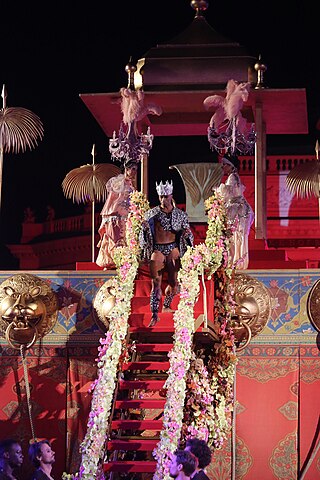
Desmond Richardson is an American dancer, actor and co-founder, and co-artistic director of Complexions Contemporary Ballet. He has mastered a wide range of dance forms including hip hop, classical, modern, classical ballet, and contemporary ballet.
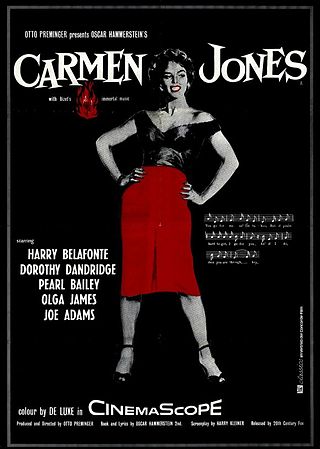
Carmen Jones is a 1954 American musical film featuring an African American cast starring Harry Belafonte, Dorothy Dandridge, and Pearl Bailey and produced and directed by Otto Preminger. The screenplay by Harry Kleiner is based on the lyrics and book by Oscar Hammerstein II, from the 1943 stage musical of the same name, set to the music of Georges Bizet's 1875 opera Carmen. The opera was an adaptation of the 1845 Prosper Mérimée novella Carmen by Henri Meilhac and Ludovic Halévy.
"A Sleepin' Bee" is a popular song composed by Harold Arlen with lyrics by Arlen and Truman Capote. It was introduced in the musical House of Flowers (1954) and performed by Diahann Carroll. While House of Flowers was a flop, "A Sleepin' Bee" became a standard of the American songbook.
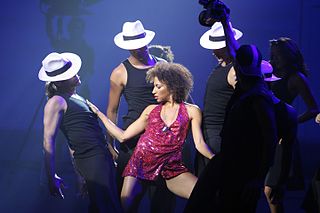
Lana Jean Gordon is an American singer, best known for her appearances in Broadway and theatre productions.
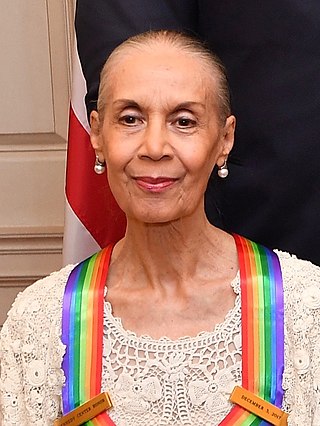
Carmen de Lavallade is an American actress, choreographer and dancer. For many years, she was associated with and married to Tony Award-winning actor, dancer, and director Geoffrey Holder. In 2017, she received the Kennedy Center Honors award for lifetime achievement and contributions to American culture.

Josephine Mary Premice was a Haitian-American actress and singer known for her work on the Broadway stage.
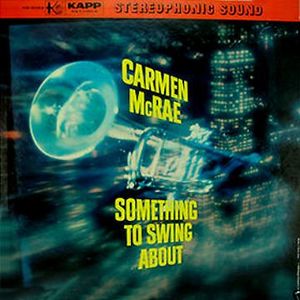
Something to Swing About is a 1960 album by jazz singer Carmen McRae, arranged by Ernie Wilkins.

Loretta Agatha Abbott was an American educator, dancer, choreographer, singer, director, dance captain, and actress. She was an early member and foundation builder for the Alvin Ailey Dance Company. She was also a founding member of the Clark Center for the Performing Arts, and worked with the organization from 1959 to 1989.
The Grass Harp is a play written by Truman Capote based on his novel of the same name. Producer Saint Subber staged it on Broadway in 1952. It was Capote's first play.

Vivian Bonnell was an actress and calypso singer, originally from Antigua, British West Indies. In 1954, she starred opposite Pearl Bailey in the Broadway musical House of Flowers. She and her fellow cast members recorded calypso albums as "Enid Mosier and her Trinidad Steel Band". She later married one of those performers, Austin Stoker.
References
- ↑ "House of Flowers (Original Broadway Cast Recording)". Presto Music.
- ↑ "Mechanic adds LaBelle in 'House of Flowers'". Baltimore Sun.
- ↑ "Original Orchestrations for House of Flowers Reported Lost, So Encores! Will Perform New Ones". TheaterMania.
- ↑ https://www.ibdb.com/broadway-production/house-of-flowers-2493#OpeningNightCast [ bare URL ]
- ↑ "Winners". Tony Awards.
- ↑ "House of Flowers (Original Broadway Cast Recording) - Pearl Bailey, Original Broadway Cast | Songs, Reviews, Credits". AllMusic.
- ↑ "House of Flowers". Time . February 9, 1968.